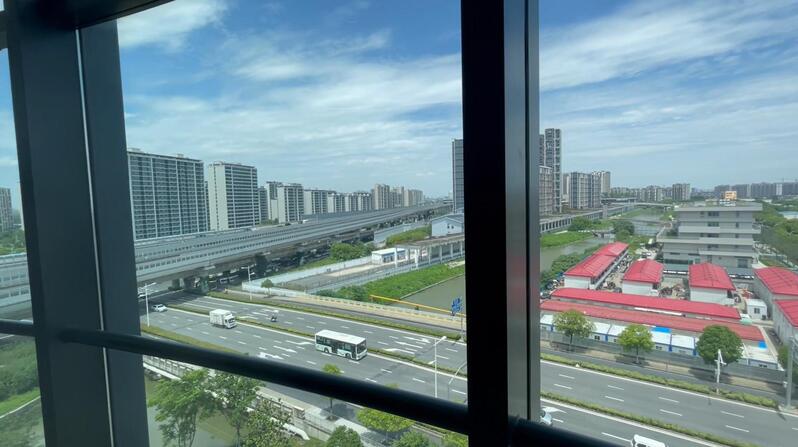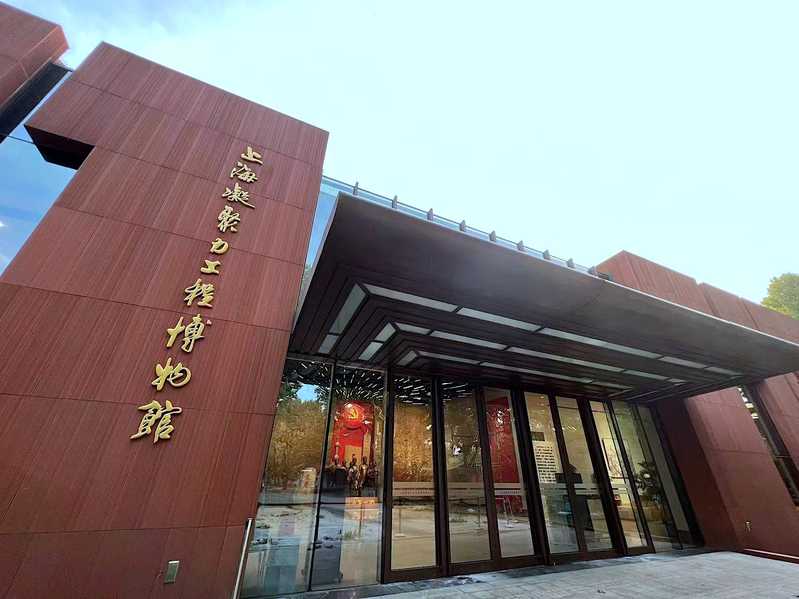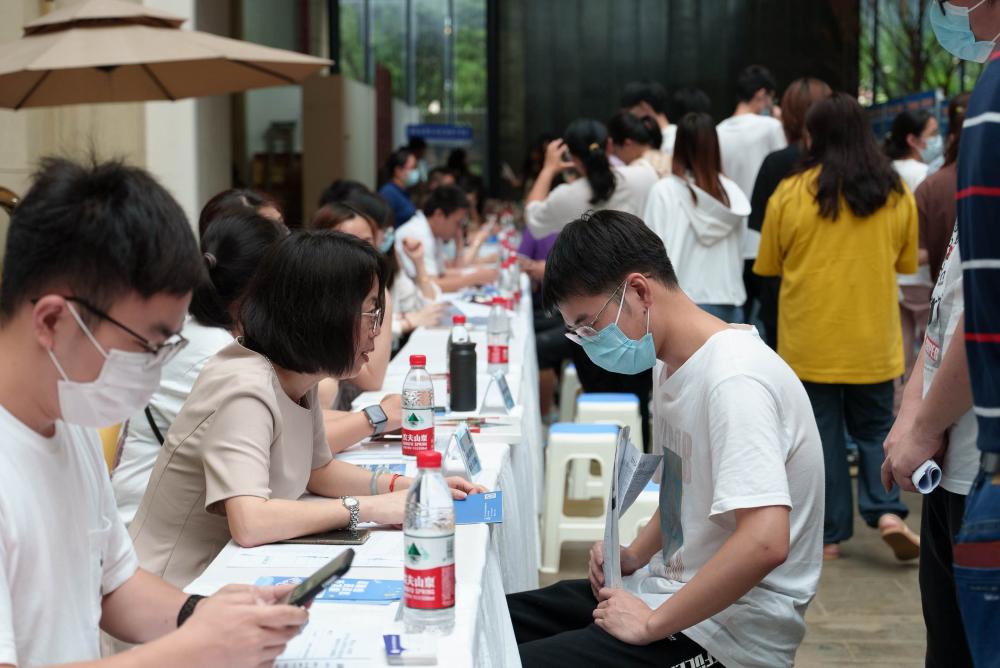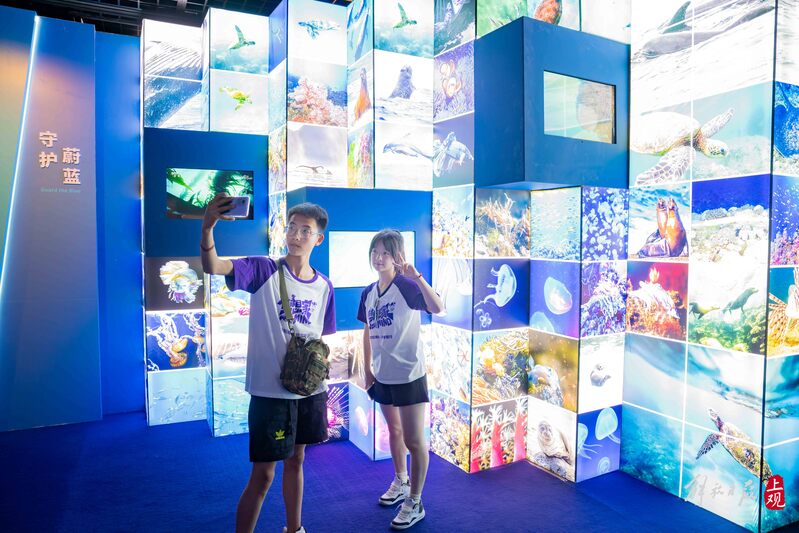Nine cities in the Yangtze River Delta are accelerating their integration and evolving into national strategies, with a highway named Science and Technology Innovation Corridor Expressway
At the end of May, the conference on promoting the ecological construction of the G60 Science and Technology Innovation Corridor in the Yangtze River Delta was held in the source area of Songjiang District, Shanghai. The conference further clarified that the nine cities in the G60 Science and Technology Innovation Corridor should work together to build a source of scientific and technological innovation, jointly build world-class industrial clusters, and jointly cultivate an international first-class innovation ecosystem, becoming the pioneers of China's scientific and technological and industrial innovation.
Over the past five years, the G60 Science and Technology Innovation Corridor has evolved from a highway to an important component of the integrated national strategy of the Yangtze River Delta. It is like a spotlight, driving nine cities including Shanghai Songjiang, Jiaxing, Hangzhou, Jinhua, Suzhou, Huzhou, Xuancheng, Wuhu, and Hefei to accelerate their integration into the integrated development matrix of the Yangtze River Delta, and also lighting up the path of regional collaborative innovation and technological breakthroughs.
Building a Source of Technological Innovation Together
In 2016, Shanghai Songjiang was in a critical stage of transformation where economic structural issues were increasingly prominent, and its development fell into a bottleneck period. Faced with a complex situation, the entire Songjiang region is pondering how to break through.

After conducting research by the Songjiang District Committee and Government, it was found that the G60 Shanghai Kunming Expressway runs through the entire city. Along the route, there are not only nationally renowned university towns, but also manufacturing hubs oriented towards the Yangtze River Delta region, linked by industrial and innovation chains. Based on the development experience of the international high-tech industry highland, from connecting points into lines to connecting lines into patches, and then expanding into belts and gathering areas, Songjiang creatively proposes the strategic concept of building the G60 Science and Technology Innovation Corridor in combination with its own reality, promoting cross regional integration platform cooperation with "science and technology innovation+industry" as the main body, and breaking away from the original urban pattern and integrating into the Yangtze River Delta.
Under the guidance of the new development concept, the G60 Science and Technology Innovation Corridor is exploring the deepening and implementation of cross regional and cross domain collaborative innovation mechanisms, facilitating the flow of elements: taking the lead in building a "one network" mechanism for nine cities, and issuing the first cross provincial and cross regional business registration license in China; Introduce and deepen the implementation of the "1+10" talent policy and 18 policies for mutual recognition and exchange of talents among nine cities, and efficiently allocate talent resources to nine cities. Between 2016 and 2018 alone, the total investment in the nine cities of the G60 Science and Technology Innovation Corridor in the Yangtze River Delta reached 667.6 billion yuan, with over 70000 registered enterprises.
Many enterprises, based on their own development needs, accelerate their layout in the Yangtze River Delta and create impressive "twin city stories" or "multi city stories". For example, Chint Electric has launched a "three city" synchronous development model, achieving the optimal configuration of the industrial chain and value chain: building Chint Qidi Smart Port in Songjiang, laying out an electrical industry base in Jiaxing, Zhejiang, and setting up a manufacturing equipment base in Hefei, Anhui, to improve supply chain stability. In the past three years, the name of the Yangtze River Delta G60 Science and Technology Innovation Corridor has changed three times: from the initial launch of the G60 Shanghai Songjiang Science and Technology Innovation Corridor construction, to the 3.0 version of the Yangtze River Delta G60 Science and Technology Innovation Corridor, which crosses nine cities in three provinces and one city, the radiation range of the corridor is becoming wider and wider. In March 2021, "Accelerating the Construction of the G60 Science and Technology Innovation Corridor in the Yangtze River Delta" was included in the national "14th Five Year Plan" and the 2035 Long Range Goal Outline. The G60 Science and Technology Innovation Corridor has moved from the "highway era" to the "high-speed rail era", and from the urban strategy of Songjiang to the national strategy of integrating the Yangtze River Delta. From the development practice of the G60 Science and Technology Innovation Corridor, it can be seen that there has not been a "siphon effect" among the nine cities, but rather a departure from the old path of homogeneous competition, achieving complementary regional economic advantages and win-win cooperation. Since the joint construction of the nine cities, the total GDP has increased from 1/16 of the country to 1/15, and the proportion of local fiscal revenue in the country has increased from 1/15 to 1/12.
On the screen of the Tongji University World Urban Agglomeration Development Database, the yellow line representing the frequency of urban interactive investment gathers along the G60 Science and Technology Innovation Corridor in the Yangtze River Delta, with Songjiang as the source, to jointly build a world-class industrial cluster. Wu Zhiqiang, an academician of the CAE Member and the former vice president of Tongji University, believes that the interaction density of the nine cities in the G60 science and innovation corridor in the Yangtze River Delta, especially the frequency of interactive investment, the mobility of science and innovation and other development factors, has shown distinctive characteristics of urban agglomeration - and has strong path similarity with world-class urban clusters such as New York and London. Since 2018, the G60 Science and Technology Innovation Corridor has transformed from a highway into a science and technology innovation corridor. The R&D investment intensity in nine urban areas has increased from 3% to 3.55%, the proportion of added value of strategic emerging industries to GDP has increased from 11.5% to 15%, the number of high-tech enterprises has increased from 14900 to 44200, and the number of PCP international patent applications has increased by 1.6 times. Vice Minister of Science and Technology Xiang Libin said that the G60 Science and Technology Innovation Corridor has formed the most dynamic, open, and innovative urban cluster in the Yangtze River Delta region, becoming an important engine for promoting high-quality integrated development in the region. As one of the nine cities in the G60 Science and Technology Innovation Corridor, Wuhu is promoting a collaborative innovation model of "incubation in Shanghai, industrialization in Wuhu; research and development in Shanghai, production in Wuhu; front-end in Shanghai, back-end in Wuhu". At present, the Wuhu Industrial Innovation Center located in Songjiang District has attracted 11 enterprises to settle in and attracted more than 50 high-end talents from home and abroad. This is the first "science and technology innovation enclave" in an Anhui city to purchase land for self construction in Shanghai. In the next stage, the G60 Science and Technology Innovation Corridor's nine cities will also accelerate the construction of industrial collaborative innovation centers, leverage Shanghai's driving role, promote the construction of industrial collaborative innovation projects in Shanghai, such as Jinhua, Zhejiang Merchants, and Anhui Investment, and build a new integrated development model with R&D headquarters in Shanghai and production and manufacturing in the local area.

In regional collaborative innovation, in addition to playing an efficient government role, the G60 Science and Technology Innovation Corridor stimulates more market entities and reduces institutional transaction costs. Nine cities have formed a "1+7+N" industrial alliance system, focusing on strategic emerging industries and specialized, refined, and new small and medium-sized enterprises, and carrying out factor docking activities. Through industrial alliances, the nine cities have broken the constraints of administrative divisions, shared high-quality technological resources, not only reduced enterprise research and development costs, but also enhanced the global competitiveness of regional industrial clusters.
Previously, Songjiang enterprise Baolong Technology established a factory in Hefei Park through an industrial alliance, sharing scientific research achievements in Shanghai and Hefei, as well as maintaining stability in the automotive industry chain and supply chain. At present, Baolong Technology has reached the forefront of the global market in the field of automotive components such as valves, exhaust system fittings, and tire pressure monitoring systems.
"Baolong Technology leverages the G60 Science and Technology Innovation Corridor to promote the research and development of core technologies in the field of automotive visual perception." Liu Tao, the head of the enterprise's technical team, said that only by laying a leading hand in key areas can we stand undefeated in international competition. In recent years, despite being affected by international trade frictions, Baolong Technology has maintained a steady pace of enterprise development.
In the research and development process of the C919 aircraft of Guozhi Heavy Industries, Jiucheng City has incorporated thousands of enterprises into the G60 aircraft supplier reserve through the "1+7+N" industrial alliance system, increasing the number of qualified suppliers in the field of large aircraft installation equipment by over 40%. This has led to the establishment of a joint research and development team between key enterprises and COMAC, and the independent development of the ARJ21 auxiliary power device, achieving in-situ replacement and meeting independent controllability.

Transforming the advantages of each of the nine cities into overall advantages, collaborating on major equipment, key materials, and components, and accelerating technological innovation, is precisely the advantage of the G60 Science and Technology Innovation Corridor in industrial collaborative innovation.
Jointly cultivate world-class innovative ecology "Congratulations! 2.6 million yuan!" With the sound of a hammer, the scientific and technological achievement "Preparation method of non-aqueous sol gel of highly dispersed nano alumina" from Xuancheng, Anhui Province, was settled in an enterprise in Hangzhou. Recently, the cumulative transaction volume of the 5th Science and Technology Achievement Auction of the G60 Science and Technology Innovation Corridor in the Yangtze River Delta reached a new high of 10.968 billion yuan. Each G60 Technology Achievement Auction is a concentrated display of the achievements of the nine cities in the G60 Science and Technology Innovation Corridor, as well as a microcosm of the gathering of various specialized institutions to enhance the effectiveness of factor docking. Guo Shuqing, Deputy Director of the G60 Joint Office and Director of the Songjiang District Science and Technology Innovation Development Office, said that the transaction volume of the five science and technology auctions has accelerated year by year, reflecting the science and technology innovation ecology of the G60 Science and Technology Innovation Corridor and the strong cohesion and sustainable development of the nine cities in collaborative innovation.
According to the panoramic scan of the G60 Science and Technology Innovation Corridor by the Shanghai Institute of Science and Technology, the number of specialized, refined, and innovative "little giants" enterprises at or above the provincial level has increased by nearly three times. Major original innovation achievements represented by quantum communication and "artificial sun" continue to emerge, and the number of national science and technology awards accounts for 16.2% of the country
Behind the highly valuable numbers lies the G60 Science and Technology Innovation Corridor, which aims to build a closer community of technological innovation, promote the construction of a number of major research and development platforms such as the Songjiang G60 Brain Intelligence Science and Technology Innovation Base, Zhijiang Laboratory, Cohen Laboratory, and Youtu Laboratory, and prepare a list of core technology breakthroughs in the industrial chain. At present, a batch of significant original achievements have emerged in nine cities, filling multiple gaps in urgently needed fields in China. A good science and technology innovation ecosystem must have the characteristics of efficient allocation of innovative elements, effective collaboration of multiple entities, and highly complementary comparative advantages. The G60 Science and Technology Innovation Corridor has fundamental advantages in this regard. By exploring cross regional practices of a new national system, the G60 Science and Technology Innovation Corridor promotes the open sharing of major scientific and technological infrastructure, scientific research instruments and equipment, and scientific data; Facilitate strategic cooperation between Jiucheng City, the Shanghai Branch of the Chinese Academy of Sciences, and the Shanghai Academy of Sciences in a project-based, list based, and institutionalized manner, with more than ten projects successfully implemented. To accelerate the transformation and implementation of scientific and technological achievements, the nine cities have also established and improved a full chain scientific research service system, including scientific and technological consulting, research and development testing, scientific and technological finance, and achievement transfer and transformation. At present, the first cross regional science and technology achievement transformation fund in the Yangtze River Delta - the Yangtze River Delta G60 Science and Technology Innovation Corridor Science and Technology Achievement Transformation Fund has been successfully registered and filed with the China Securities Investment Fund Industry Association, and has established a project database of 500 proposed investment enterprises.





